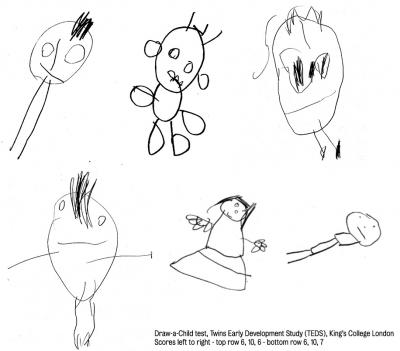
A large and long-term new study shows the way a 4-year-old draws a person not only says something about their level of intelligence as a toddler but is also predictive of their intelligence 10 years down the line.
A team of researchers at King’s College London had 7,752 pairs of identical and non-identical 4-year-old twins draw a picture of a child. Every sketch was rated on a scale from 0 to 12 based on the presence of features, like legs, arms, and facial features. The kids also underwent verbal and nonverbal intelligence measurement tests.
When the kids turned 14, the researchers once again tested their intelligence. They found that a higher score on their drawing was moderately associated with the child’s intelligence both at age four and at age 14. The researchers expected to see a connection at age 4, but for the results to have consistency a decade later was surprising.
The researchers also found that the drawings of identical twins were more similar than the drawings of non-identical twins, suggesting that a genetic link was involved in drawing, though its exact mechanism was unknown. For instance the kids could be predisposed (or trained) to pay attention to detail well or hold their pencil in a specific way, the researchers say.
“The correlation is moderate, so our findings are interesting but it does not mean that parents should worry if their child draws badly,” said study author Dr. Rosalind Arden, the lead author of the paper in a statement. “Drawing ability does not determine intelligence, there are countless factors, both genetic and environmental, which affect intelligence in later life.”
The study was published Tuesday in the journal Psychological Science.
More Must-Reads from TIME
- Donald Trump Is TIME's 2024 Person of the Year
- Why We Chose Trump as Person of the Year
- Is Intermittent Fasting Good or Bad for You?
- The 100 Must-Read Books of 2024
- The 20 Best Christmas TV Episodes
- Column: If Optimism Feels Ridiculous Now, Try Hope
- The Future of Climate Action Is Trade Policy
- Merle Bombardieri Is Helping People Make the Baby Decision
Contact us at letters@time.com